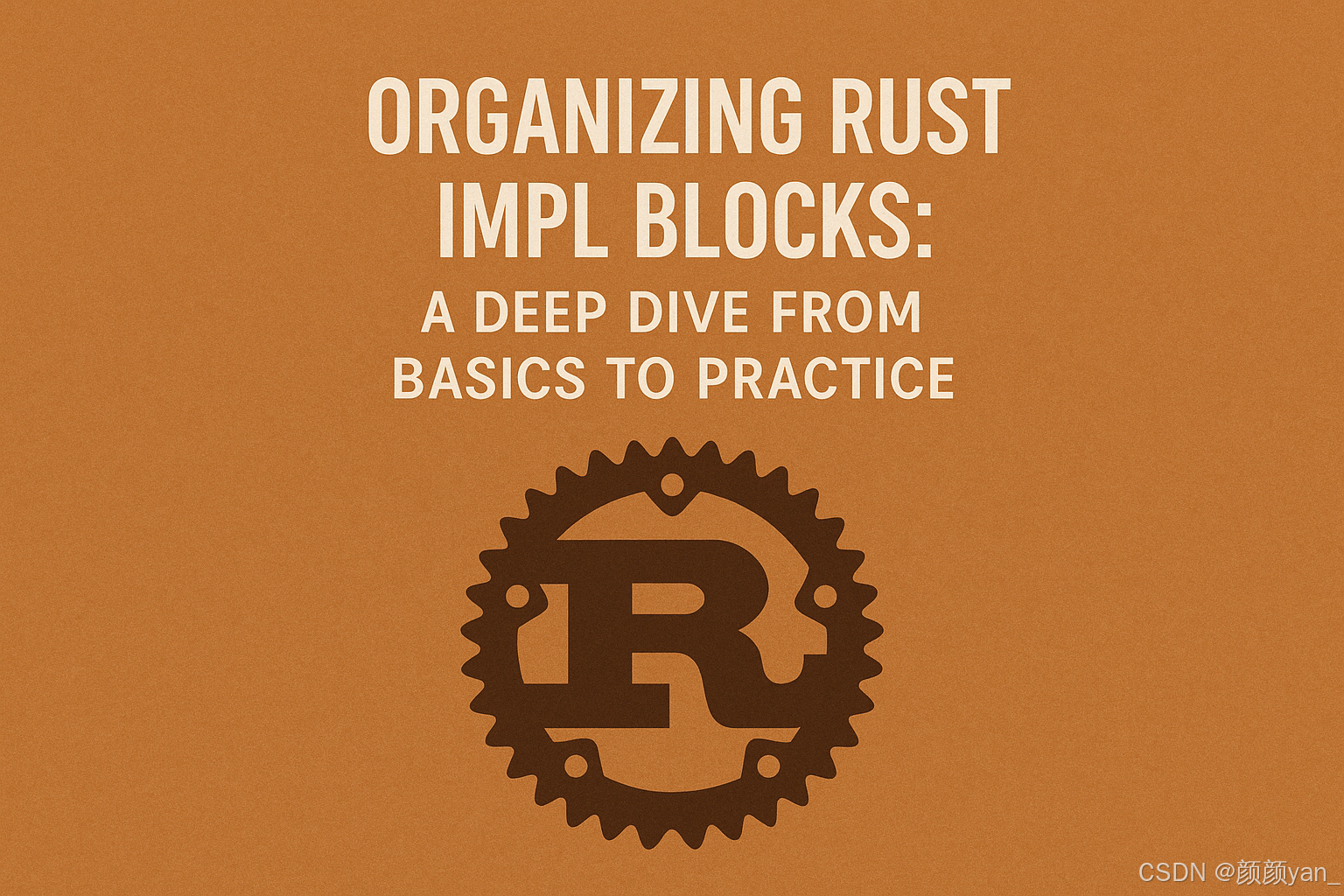
文章目录
前言
在Rust的类型系统中,impl块是连接数据结构与行为的关键桥梁。如何合理组织impl块不仅影响代码的可读性和维护性,更体现了开发者对Rust所有权系统、trait系统以及模块化设计的深刻理解。本文将从基础概念出发,通过实践案例深入探讨impl块的组织策略,帮助读者建立系统化的思维框架。
impl块的基本分类
Rust中的impl块主要分为两大类:固有实现(Inherent Implementation)和trait实现(Trait Implementation)。固有实现直接为类型添加方法,而trait实现则是为类型实现特定的trait接口。这两种实现方式在组织上有着不同的考量点。
组织策略的核心原则
单一职责原则 是组织impl块的首要考虑。将不同功能领域的方法分散到多个impl块中,可以显著提升代码的可维护性。例如,构造函数、转换方法、业务逻辑方法应该分别组织在不同的impl块中。
就近原则同样重要。将相关的trait实现放在类型定义附近,可以让代码阅读者快速理解类型的完整行为特征。但对于复杂的trait实现,特别是涉及泛型约束的情况,独立的模块文件往往是更好的选择。
深度实践:构建一个HTTP客户端的impl组织
rust
use std::time::Duration;
use std::collections::HashMap;
pub struct HttpClient {
base_url: String,
timeout: Duration,
headers: HashMap<String, String>,
}
// 核心构造和配置方法
impl HttpClient {
pub fn new(base_url: impl Into<String>) -> Self {
Self {
base_url: base_url.into(),
timeout: Duration::from_secs(30),
headers: HashMap::new(),
}
}
pub fn with_timeout(mut self, timeout: Duration) -> Self {
self.timeout = timeout;
self
}
pub fn with_header(mut self, key: String, value: String) -> Self {
self.headers.insert(key, value);
self
}
}
// HTTP请求相关方法
impl HttpClient {
pub async fn get(&self, path: &str) -> Result<Response, Error> {
self.request(Method::Get, path, None).await
}
pub async fn post(&self, path: &str, body: Vec<u8>) -> Result<Response, Error> {
self.request(Method::Post, path, Some(body)).await
}
async fn request(
&self,
method: Method,
path: &str,
body: Option<Vec<u8>>
) -> Result<Response, Error> {
// 实现细节
todo!()
}
}
// 辅助和工具方法
impl HttpClient {
fn build_url(&self, path: &str) -> String {
format!("{}{}", self.base_url, path)
}
fn apply_headers(&self, request: &mut Request) {
for (key, value) in &self.headers {
request.add_header(key, value);
}
}
}
// Debug trait实现
impl std::fmt::Debug for HttpClient {
fn fmt(&self, f: &mut std::fmt::Formatter<'_>) -> std::fmt::Result {
f.debug_struct("HttpClient")
.field("base_url", &self.base_url)
.field("timeout", &self.timeout)
.field("headers_count", &self.headers.len())
.finish()
}
}
// Clone trait实现
impl Clone for HttpClient {
fn clone(&self) -> Self {
Self {
base_url: self.base_url.clone(),
timeout: self.timeout,
headers: self.headers.clone(),
}
}
}
// 类型定义
pub struct Response { /* ... */ }
pub struct Request { /* ... */ }
pub enum Method { Get, Post }
pub struct Error;高级组织技巧
条件编译与特性门控 :当某些实现依赖于特定feature时,应使用独立的impl块配合#[cfg]属性,这样可以清晰地标识出可选功能的边界。
rust
#[cfg(feature = "json")]
impl HttpClient {
pub async fn get_json<T: serde::de::DeserializeOwned>(
&self,
path: &str
) -> Result<T, Error> {
let response = self.get(path).await?;
serde_json::from_slice(&response.body)
.map_err(|_| Error)
}
}泛型约束的分层处理:对于涉及复杂泛型约束的实现,建议将基础实现和约束实现分开。基础实现提供无条件可用的方法,约束实现则提供需要特定trait支持的扩展功能。
rust
// 基础实现
impl<T> Container<T> {
pub fn new(value: T) -> Self {
Self { value }
}
pub fn get(&self) -> &T {
&self.value
}
}
// 带约束的扩展实现
impl<T: Clone> Container<T> {
pub fn duplicate(&self) -> Self {
Self { value: self.value.clone() }
}
}
impl<T: std::fmt::Display> Container<T> {
pub fn display(&self) -> String {
format!("Container({})", self.value)
}
}
struct Container<T> { value: T }可见性与封装考量
在组织impl块时,方法的可见性设计至关重要。公共API方法应集中在前面的impl块中,私有辅助方法则放在后面。这种组织方式让API的使用者能够快速定位到他们需要的功能,同时也为维护者提供了清晰的内部实现边界。
总结
impl块的组织方式看似简单,实则蕴含着深刻的软件工程智慧。通过遵循单一职责、就近原则,合理运用条件编译和泛型约束分层,我们可以构建出既易于理解又便于维护的代码结构。优秀的impl块组织不仅是技术能力的体现,更是对代码质量持续追求的态度。在实际项目中,应当根据类型的复杂度、团队的编码规范以及项目的演进方向,灵活调整组织策略,让代码真正服务于业务价值的创造。记住,好的代码组织是写给人看的,编译器只是顺便执行而已。